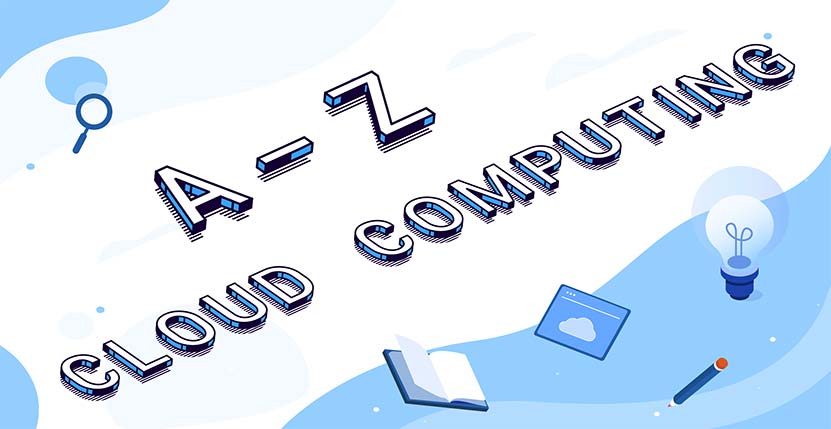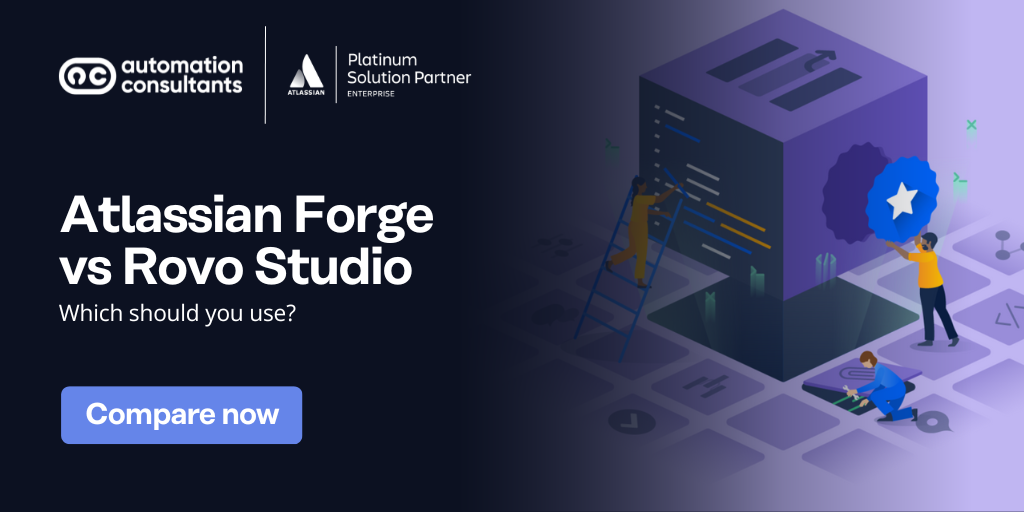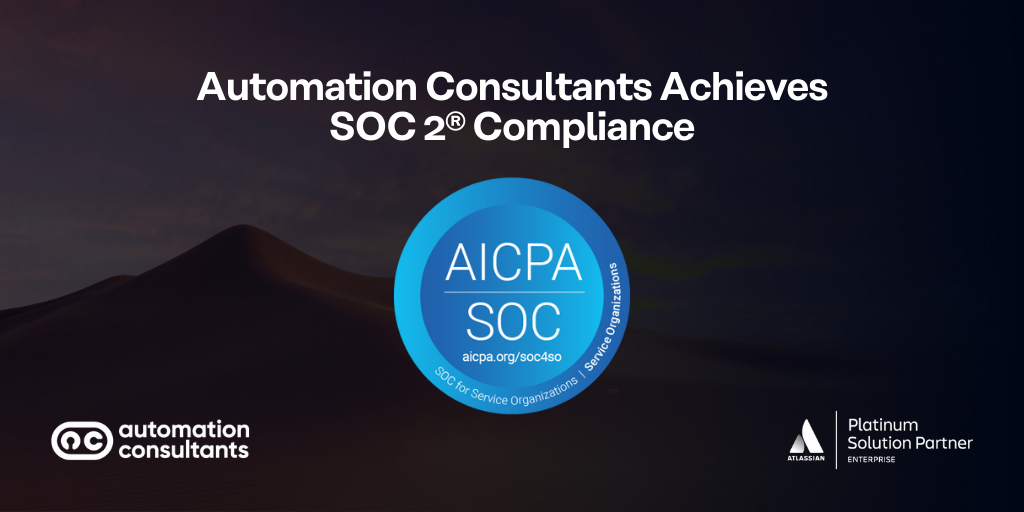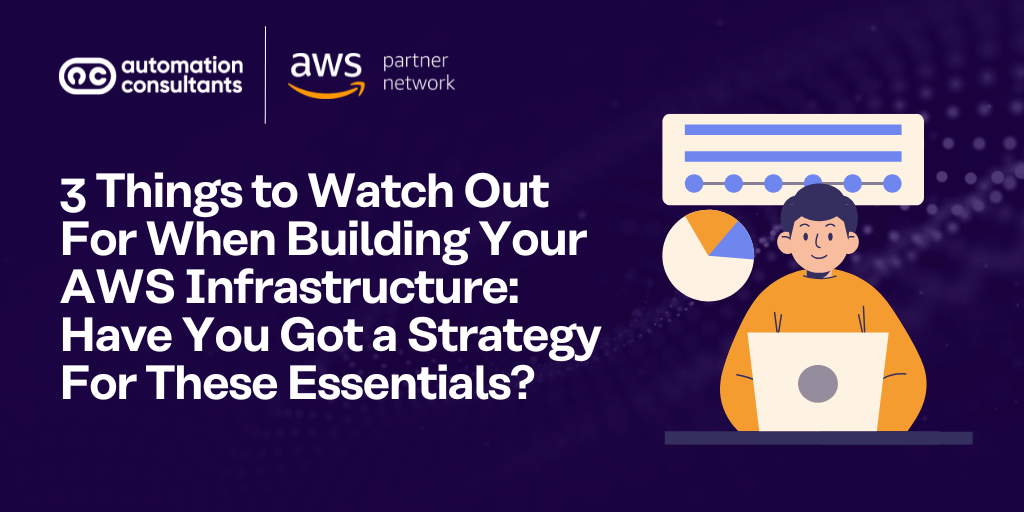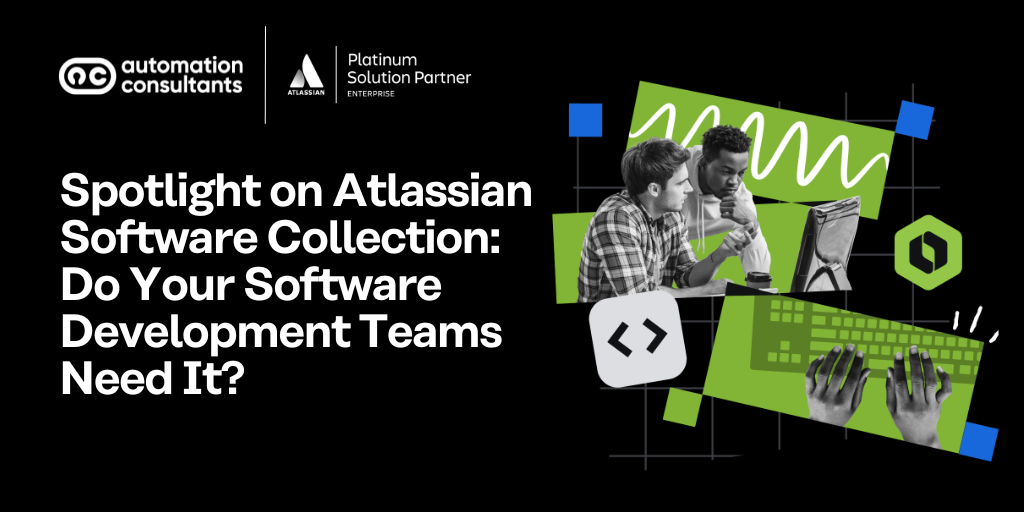Are you looking to move into the world of cloud computing? Starting a new job in tech? Or are you simply curious about what is going on in the world of tech? Well, we have you covered with all the latest lingo that will let you blend in with even the nerdiest of techies. Welcome to Automation Consultant’s A to Z of Cloud Computing!
A is for Automation
Cloud automation refers to the process of using cloud technology to automate the process of previously manual tasks to produce software that requires minimal human intervention. Implementing this change typically improves the efficiency, reliability, and speed of tasks. For example, cloud automation can be leveraged in public, private, and hybrid cloud environments to achieve objectives such as continuous integration and continuous deployment.
Cloud platforms lend themselves well to automation as you can provision and decommission servers quickly. They are also cost-effective as they are largely run on a pay-per-use basis.
B is for Big Data
These days, businesses of all sizes require data from a variety of sources – whether that be social media, applications, news outlets, customers, or any other origin. Typically, this data is used to improve a business or keep records on file for future use.
Collectively, this conglomerate of data may comprise of billions or even trillions of complex records. If that is the case, together these records have come to be known as ‘big data’. Take Google as an example – every 60 seconds, 4.4 million Google searches are performed! That requires sifting through an almost incomprehensible amount of data.
Given the volume and complexity of these records, big data often requires powerful resources to process and sort through it to produce the desired outcome. This is where cloud computing comes into play. The cloud can provision substantial amounts of computing power very quickly when required and deliver when finished. You do not need to purchase a lot of physical machines that require maintenance and replacement. It is also where machine learning becomes important as it is the building blocks of artificial intelligence, allowing you to make the most of your data.
C is for Cloud Platforms
What do Amazon Web Services, Google Cloud, and Microsoft Azure have in common? They are all cloud computing service providers! “But what does this actually mean?” I hear you cry. Traditionally, companies either owned or rented computing infrastructure or data centres to store information, run applications, or build networks between different computers, for example. However, owning and maintaining your own IT infrastructure can be extremely expensive and time-consuming.
Instead, in record numbers, companies are turning to the ‘cloud’. Cloud computing refers to “the process by which a large group of remote servers are networked to allow sharing of data-processing tasks, centralised data storage, and online access to computer services or resources” (Dictionary.com).
Cloud computing means companies (and individuals) can simply pay for what they use when they use it. Although you may not have thought of it as the cloud before, most of us use an example of cloud computing every day. If you are using an iPhone to take a photo, for example, it may tell you that you have run out of space built into your 64 GB phone (physical hardware). Your phone then asks if you would like to pay an extra £0.79/ month for 50GB extra storage in ‘iCloud’. This takes the photos off your phone, storing low-resolution copies on it to save space. If you want to view them later, you can then simply fetch them from the cloud. This means you do not have to take up precious space on your phone and can still receive WhatsApp messages from colleagues in the meantime.
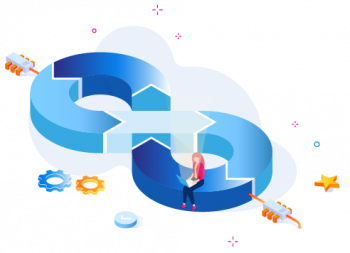
D is for DevOps
DevOps combines software development (Dev) with IT operations (Ops) to automate and integrate the processes between software development and IT teams. This process means DevOps teams can build, test, and release software more reliably and at a faster rate. Ultimately, more things are automated, the number of software deployments per period increases, and flexibility improves.
Within a DevOps lifecycle, there are several phases that operate in turn as a continuous feedback loop to help limit the number of work-in-progress projects or bottlenecks. This cycle includes continuous integration and deployment (CI/CD), test, monitor, operate, and responding to continuous feedback.
Implementing this in practice is far easier said than done though. Not only do you need to implement new tools and processes, but you also need to transform the culture and mindset of your teams. Typically, an organisation’s commitment to DevOps will be implemented through a pipeline, a set of practices to make the process organised and focused depending on the workflow. Regardless, there are four core stages that encompass almost every pipeline – develop, build, test, and deploy.
Ultimately, cloud computing makes the implementation of DevOps easier. As mentioned in ‘Automation’, the cloud lends itself conveniently to the automation and connectivity that drives DevOps and CI/CD.
E is for Elasticity
Cloud elasticity is one of the most convincing selling points for organisations looking to migrate from data centres to the cloud. Cloud elasticity refers to the ability of the cloud to dynamically and quickly allocate cloud resources in response to evolving demands. If there is an increase in demand for a service run on the cloud, the cloud can respond to keep up.
The major benefit of elasticity is that you can avoid overprovisioning (allocating too many resources) or under–provisioning (allocating too few), to a particular service or application. This helps avoid higher than necessary expenses while ensuring there’s still enough space for as many users as necessary to access the service.
F is for Fault Tolerance
Fault tolerance, in the context of cloud computing, is the ability of the cloud to continue operations without interruption when one or more of its components fail. AWS, for example, offer access to database, networking, storage and compute services that are innately resilient and highly available, which mitigates potential points of failure. Ultimately, these services allow you to build more resilient systems in the Cloud.
G is for Gateway
Cloud storage gateway refers to a hardware or software appliance, or server, that is situated at an individual’s business premises. Its purpose is to act as a bridge between local applications and remote cloud-based storage. The implementation of a cloud storage gateway helps to eliminate the concern of data security and often lowers monthly charges to cloud subscriptions.
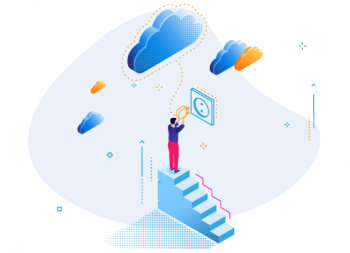
H is for Hybrid Cloud
Following perfectly on from a cloud storage gateway is the term ‘hybrid cloud’. A hybrid cloud may consist of private cloud, public cloud, and on-premises cloud services to create a model that suits each business entity.
Over the last decade, the use of hybrid clouds has soared as it enables companies to configure their own systems using whatever service is most applicable to the issue at hand. AWS Storage Gateway is one example of this. It gives your business on-premises access to virtually unlimited cloud storage, reducing the costs for key hybrid cloud storage use cases. To learn more, you can visit Amazon Web Services (AWS) Storage Gateway or contact us, an accredited AWS partner, directly.
I is for Infrastructure as a Service (IaaS)
IaaS is just one model of a cloud service. The other two most commonly used are Platform as a Service (PaaS) and Software as a Service (SaaS). The way these models differ depends on the level of control you would like and what you want to manage.
IaaS is a fully self-service system, allowing businesses to purchase additional resources when necessary. IaaS clients also must manage various aspects such as operating systems, data, applications, and runtime themselves. Meanwhile, the cloud provider manages the servers, hard drives, storage, virtualisation, and networking capabilities of the service. Examples of IaaS include AWS and Microsoft Azure.
J is for Jira
Veering away from general terms, J is for the Atlassian product, Jira. Jira is a cloud-based commercial software product that allows teams to collaborate seamlessly. Built with industry-leading privacy, security, and data control in mind, its main functions allow for issue-tracking, project management and ITSM.
In total, there are three Jira products, each with distinct functions. Jira Software, for example, allows you to plan, track, and release software. Jira Service Management, meanwhile, is designed to allow you to respond to business changes and deliver both valuable and rapid customer/ employee service. Lastly, Jira Core, built with collaboration in mind, allows teams to manage any business project from HR onboarding to legal document reviews to marketing campaigns.
Coincidentally, as with ITSM, Jira is one of our specialities at Automation Consultants.as we are one of the few UK businesses to achieve Atlassian Platinum Partners accreditation.
K is for Kubernetes
Kubernetes is an open-source system that automates computer application, deployment, scaling, and management. It allows you to manage building blocks, known as containers, that provide the necessary mechanisms to deploy, maintain, and scale applications and services.
Originally developed for internal use at Google, it is now open–source, and most cloud services offer a Kubernetes-based platform. It forms the basis of tech stacks in several well-known companies, including Adidas, Shopify, and Slack.
L is for Load Balancing
Modern applications cannot run without load balancing. Load balancing is the process by which network traffic is distributed across multiple servers. By spreading the load evenly, load balancing ensures no single server is overwhelmed. In doing so, it ensures the end–user receives an app that is available and responsive, vital factors to a positive user experience.
Although load balancing is not a new concept, it has become even more critical in cloud environments, due to the constant provisioning and decommissioning of cloud services.
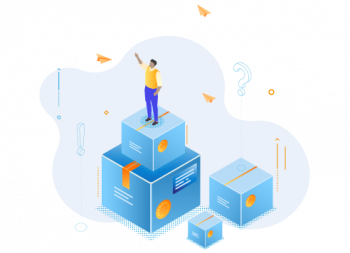
M is for Migration
Cloud migration is the process of moving applications or data to a cloud platform. It may be that a business migrates from an on-premises data centre or just from another cloud provider (cloud-to-cloud migration).
The main reason for cloud migrations from an on-premises data center the need to host data and associated applications in the most effective IT environment available – considering security, performance, and cost. There are still some reasons to maintain on-premises data centers though, and it may be best to have a hybrid model, as mentioned under ‘H.’
If this is something you are interested in, and would like to know more about, we have a Cloud vs Data Center Migrations quiz to help you decide.
N is for Networking
Cloud networking allows users to build networks with different cloud-based services through a centralised third-party provider. Businesses may use on-premises cloud networking resources to build a private, public, or hybrid networking service. Within this network, resources such as firewalls and gateways may be shared along with other necessary tools and functions.
O is for Open Cloud Computing Interface
The Open Cloud Computing Interface (OCCI) is a set of standards delivered by the Open Grid Forum for cloud computing service providers. The aim is to develop an open specification and API for cloud offerings. Initially focused on Infrastructure as a Service (IaaS), it can be extended to support Platform as a Service (PaaS) and Software as a Service (SaaS) too.
The Open Cloud Computing Interface has four main goals. Firstly, cloud interfaces should be ‘portable’ – there should be no technical or vendor lock-in, allowing users to easily switch providers with minimal technical costs. Secondly, it should allow for easier integration with both legacy and the latest infrastructure specifications. Thirdly, it should be interoperable, allowing different cloud providers to collaborate without format/ data schema translation. Finally, it should have the ability to be extended allowing clients to interact with any other OCCI server using these specific OCCI extensions.
P is for Platform as a Service (PaaS)
PaaS represents the in-between stage of Software as a Service (SaaS) and Infrastructure as a Service (IaaS). As a business using a PaaS, you retain control and manage your applications and data. However, your cloud provider handles servers, storage, networking, runtime, middleware, operating system, and virtualisation. As such, PaaS is a simple, cost-effective, and scalable way of developing and deploying apps. Examples of PaaS include AWS Elastic Beanstalk and Windows Azure.
Q is for Quality Assurance
Quality assurance (QA) is a part of quality management that focuses on preventing mistakes and avoiding problems when delivering services or products. When trusting third-party cloud service providers, users give up varying degree of control over important functions, as seen with IaaS, PaaS and SaaS. As such, rigorous quality assurance is fundamental to prevent errors.
To help mitigate risks in the cloud, quality assurance measures are typically applied to ensure security. These are conducted on an application level, service middleware level, and infrastructure level.
R is for Regions
A cloud region describes the physical location of the public cloud resources. The ‘cloud’ is not an intangible space, something mythical in the air around us. ‘Cloud’ is simply the name for the actual data centres that process data and store it. Consequently, when you choose a cloud provider, you are choosing a ‘region’ where your data will exist.
Regions are important as the closer your customers/ employees are to cloud regions, the better and faster their experience will be. Your business might also have strict security requirements stating where data must be stored.
This helps to explain why AWS, for example, is such a great cloud service provider. Not only are they located all over the world, unlike alternative cloud service providers who sometimes define a ‘region’ as a single data center, Amazon has multiple data centers in each region, known as an ‘availability zone.’
S is for Software as a Service
Software as a Service (SaaS) platforms typically run directly through your web browser, using the internet to deliver whole applications, meaning they do not normally require any downloads or installations. As an example, G Suite, Dropbox, and Salesforce are all SaaS applications. All the data, servers, storage, and middleware are managed by the application vendor somewhere in the Cloud.
T is for Transformation
Digital Transformation uses modern digital technologies to modify or drive business processes, culture, and change. In this ‘revolution’, cloud computing has played a key role and is most frequently the technological catalyst for change. It affects the way everyone in an organisation works and can only be successful with the right people, process, and tools in place.
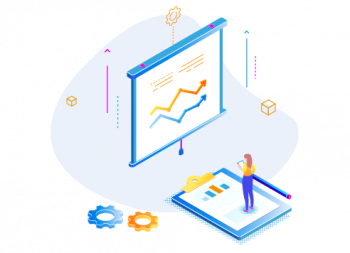
U is for Usability Testing
When migrating to the cloud for hosting and/or software services, it is important to undertake usability testing. Usability refers to the quality of a user’s experience when interacting with the product in question. It considers efficiency, effectiveness, and overall user satisfaction. This will help ensure the transition to the cloud meets your requirements and specifications as well as expectations.
V is for Vendor Lock-in
One of the biggest obstacles to the adoption of cloud technology at the moment is vendor lock-in. This most frequently occurs when the cost of switching to a new vendor is so high that the business is stuck with their original provider. It may also occur when a business has already signed a long-term contract with one provider and cannot easily leave the contract, regardless of the fact it may no longer meet their needs.
In the cloud, for example, your business may have opted to use Google for storing your data, sending e-mails, and CRM. However, it may transpire down the line that Amazon is now providing far cheaper storage costs and so you want to switch that part of your business to Amazon. If you were tied into a contract with Google, rather than pay-per-use, this wouldn’t be possible and as such, would present a vendor lock-in complication.
W is for Workflow
Workflow refers to the sequence of steps that make up a work process. Having an efficient workflow in place can add value to a business’s activities. In every workflow, there are often multiple factors that come into play, both fixed and conditional. When handled manually, there is a high chance some things may slip through the cracks, leading to problems later down the line. To avoid this, many companies adopt cloud workflows that automate repetitive tasks in a consistent and reliable way across their services, reducing manual steps and improving efficiency in the process.
One example of this is Amazon Simple Workflow Service (SWF). This offering helps developers to build, run, and scale background jobs that may have sequential or parallel steps. Its goal, stated by Amazon, is to ‘replace the complexity of custom-coded workflow solutions and process automation software with a fully managed cloud workflow web service’.
X is for XaaS
XaaS stands for Anything as a Service! Although we have already discussed SaaS, PaaS, and IaaS, XasS refers to a general category of services related to cloud computing and remote access. Although SaaS, PaaS and IaaS are the most encountered acronyms, there are several others out there. For example, Backend as a Service (BaaS), Communications as a Service (CaaS), Enterprise as a Service (EaaS), and Disaster Recovery as a Service (DRaaS).
XaaS simply highlights the proliferation of cloud services and the multitude of service options available in cloud computing.
Y is for Yottabyte
A yottabyte (YB) is a unit of digital information storage that denotes the size of data. A yottabyte is equivalent to 1,000 zettabytes, a quadrillion gigabyte, and 1,000,000,000,000,000,000,000,000 bytes!
To put that into the context of the cloud, in 2021, worldwide there were 3.3 zettabytes of data transferred. While that figure is enormous, we are still a long way from a yottabyte – 9,997 zettabytes to be exact.
Z is for Zero Downtime
Zero downtime is the ultimate goal of any cloud computing service provider and any business using cloud technology. It refers to a service that operates without any interruptions. Outages result in user frustration and can have more profound consequences, such as economic loss or stunted business growth.
To achieve zero downtime, you need to ensure you have the right infrastructure in place and access to technical support that runs enough tests and checks to keep your cloud services up and running. If you need help achieving this, do not forget to check out the cloud services and managed hosting offerings we provide here at Automation Consultants.
Conclusion
There we have it, AC’s A to Z of Cloud Computing. But why stop there? If you have spotted something important that we have missed, or you can think of better options for some of the letters (yes, I am talking about Y for Yottabyte…) then leave a comment with your answers.
Equally, if you have found this helpful or learned something new, please do share this across your network to distribute its benefits among your friends and colleagues. Keep an eye on our blog as we release new posts frequently and hopefully, you’ll see something you like!

